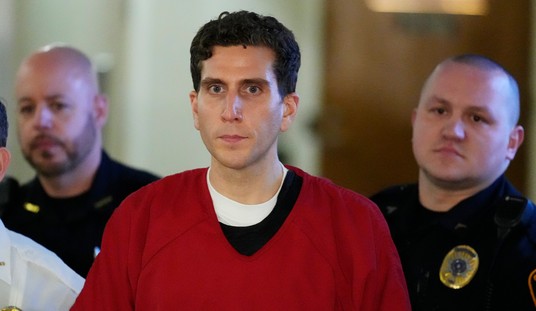The debate between left and right on contributing factors in the Tucson shootings has unfolded along utterly predictable and thoroughly unenlightening lines.
Liberals accuse conservatives of overheated, gun-related rhetoric that created a hostile, edgy climate that may have encouraged the killer; the right responds that there’s no evidence of Jared Lee Loughner’s conservative orientation and that liberals make equally reprehensible and irresponsible statements.
Neither side bothers to examine two highly dubious core assumptions:
1-That the Obama era constitutes a uniquely polarizing and hostile political period.
2-That assassinations take place most frequently when politicians and commentators make vicious comments against one another.
First, no American with a memory can honestly suggest that today’s political divisions count as more toxic than ten years ago -- when a majority of Democrats questioned Bush’s very legitimacy as president, or the late ‘90’s when Republicans mobilized a determined effort to drive Clinton from office through impeachment.
Moreover, where is the evidence that bitter political divisions produce murder?
The national murder rate has fallen precipitously in precisely the period (the administrations of Bill Clinton, George W. Bush and Barack Obama) associated with ferocious partisan warfare and even (in 1995, the beginning of the plunge) an unprecedented government shutdown.
Some past periods of nasty debate produced no assassinations—the McCarthy era resounded with charges of treason, espionage, disloyalty, demagoguery and cover-ups, but no major shootings of public figures. Even earlier, Thomas Jefferson and John Adams battled one another in 1800 in what many historians consider the nastiest, most divisive presidential battle in all American history, but well-armed Americans attempted no assassination of a president until more than a quarter century later (when a delusional loser – sound familiar?—tried to kill Andrew Jackson). In 1884, Republican Presidential candidate James G. Blaine and Democratic nominee Grover Cleveland fought through an epic orgy of mudslinging featuring charges (true, as it turned out) of an illegitimate daughter and financial corruption; neither individual nor any members of their administration faced crazed shooters.
Recommended
Killings often occur in relatively placid political climates of consensus – as with the assassinations of two popular, young centrist presidents, James A. Garfield (1881) and John F. Kennedy (1963), following close elections in 1880 and 1960 when the major candidates (all of them widely admired war heroes) largely agreed on issues.
Despite the current attempts to blame partisanship and polarization for a (non-existent) “rising tide of violence” the evidence of history is clear: fierce rhetoric doesn’t cause shootings, any more than moderate, consensus politics guarantees safety for our public figures.

























Join the conversation as a VIP Member